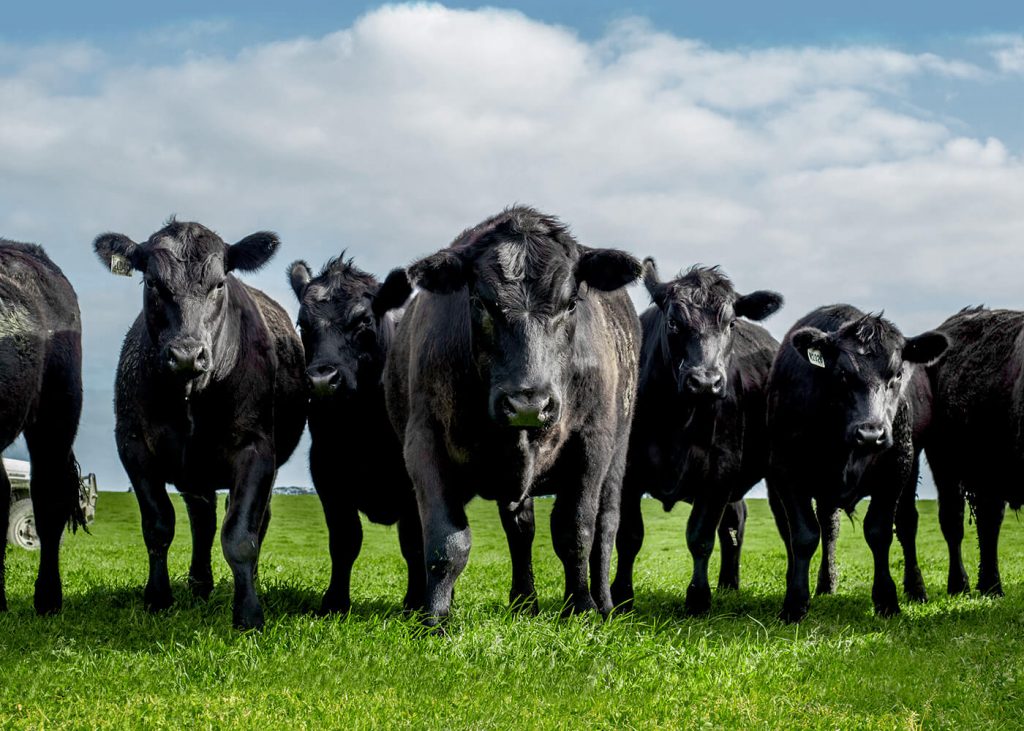Constance Cattle: Unlocking Potential Revenues in Lasting Livestock Farming
Constance Cattle: Unlocking Potential Revenues in Lasting Livestock Farming
Blog Article
Master the Art of Cooking With Grass Fed Meat
In the world of cooking competence, grasping the art of cooking with grass-fed meat holds a prestigious placement. From the tender structure to the robust flavor account, grass-fed meat presents a canvas for culinary creative thinking.
Advantages of Grass-Fed Meat

When choosing grass-fed meat, consumers can gain from its higher levels of omega-3 fatty acids and anti-oxidants compared to conventionally raised meat. Constance Cattle. Omega-3 fatty acids are necessary nutrients that support mind health and wellness, lower inflammation, and promote heart wellness. Grass-fed meat is known to have up to five times extra omega-3 fats than grain-fed meat, making it a much healthier choice for those aiming to boost their consumption of these helpful fats
Along with omega-3 fats, grass-fed meat is also richer in anti-oxidants such as vitamins E and C, in addition to beta-carotene. Anti-oxidants play a critical duty in protecting cells from damage triggered by free radicals, which can add to various chronic diseases and increase aging. By choosing grass-fed meat, consumers can not only delight in a more tasty and nutrient-dense healthy protein resource yet also support their general wellness and health.
Including grass-fed meat right into your diet regimen can be a straightforward yet effective means to boost your nutritional consumption and profit of omega-3 fatty acids and antioxidants that are naturally bountiful in this sort of meat.
Ideal Cooking Techniques
Using suitable food preparation techniques is vital to preserve the nutrient account and boost the taste of grass-fed meat. When cooking grass-fed meat, it is vital to bear in mind that it is leaner than conventionally elevated meat, making it much more susceptible to drying if overcooked. To make certain a juicy and flavorful outcome, think about cooking grass-fed meat at somewhat reduced temperatures than you would certainly with grain-fed meat.
Cooking is a popular approach for food preparation grass-fed meat as it allows excess fat to leak away, preventing flare-ups that can trigger charring. When barbecuing grass-fed meat, usage tool heat and maintain a close eye on it to prevent overcooking. Another great food preparation approach for grass-fed meat is pan-searing. This method assists secure in the juices and develop a tasty crust on the meat.
Sluggish food preparation methods such as braising or cooking are additionally outstanding alternatives for tougher cuts of grass-fed meat, as they help damage down the muscular tissue fibers and tenderize the meat. Whichever food preparation approach you pick, bear in mind to allow grass-fed meat rest after preparing to allow the juices to redistribute, guaranteeing a wet and tender last meal.
Taste Pairings and Seasonings
To boost the natural tastes of grass-fed meat, tactical taste pairings and seasonings play a vital function in raising the general eating experience. Grass-fed meat has an abundant, distinct taste that can be complemented and boosted by very carefully chosen ingredients. When it involves taste pairings, herbs like thyme, rosemary, and oregano job remarkably well with grass-fed beef, lamb, or bison. These natural herbs add deepness and earthiness to the meat, enhancing its natural tastes without overpowering them.
Along with herbs, flavors such as black pepper, garlic, and smoked paprika can even more elevate the taste account of grass-fed meat meals. These flavors give a balance of heat, sweetness, important site and smokiness that can improve the overall eating experience. When flavoring grass-fed meat, it is vital to utilize top quality salt, like sea salt or Himalayan salt, to bring out the meat's tastes without adding unnecessary chemicals or additives.
Storage Space and Taking Care Of Tips
Proper storage and handling practices are vital for maintaining the top quality and quality of grass-fed meat. When saving grass-fed meat, it is important to maintain it refrigerated at temperatures listed below 40 ° F(4 ° C) to stop bacterial growth and spoilage. To prolong the meat's service life, consider wrapping it securely in parchment paper or butcher paper prior to placing it in an airtight container or sealed plastic bag - Constance Cattle. Avoid storing grass-fed meat near strong-smelling foods as it can soak up smells easily.
When managing grass-fed meat, it is necessary to practice excellent health to avoid cross-contamination. Clean your hands completely before and after taking care of the meat, and ensure that all utensils and surfaces that come right into contact with the meat are cleaned and disinfected correctly. In addition, make use of separate reducing boards for meat and vegetables to avoid microbial transfer.

Leading Grass-Fed Meat Recipes
When thinking about the finest means to savor the top quality and quality of grass-fed meat, checking out first-class recipes can elevate your culinary experience. Grass-fed meat's abundant flavor and leaner profile provide themselves well to a variety of meals that highlight the all-natural goodness of the meat. One top dish to attempt is a classic Grilled Grass-Fed Ribeye Steak skilled with easy components like salt, pepper, and a touch of garlic for a robust taste. For a reassuring dish, a Slow Cooked Grass-Fed Beef Stew with root vegetables and aromatic herbs is a hearty alternative that draws out the meat's inflammation.
If you remain in the state of mind for something lighter, a Grilled Grass-Fed Hamburger offered with fresh garnishes and a side of pleasant go to my blog potato fries is a delicious choice. Furthermore, a Herb-Crusted Grass-Fed Rack of Lamb roasted to excellence with a collection of natural herbs and breadcrumbs is a show-stopping recipe for special celebrations. These top grass-fed meat dishes showcase the versatility and superior high quality of grass-fed meat, enabling you to enjoy its remarkable taste in numerous culinary developments.

Conclusion
In final thought, understanding the art of food preparation with grass-fed meat offers numerous benefits, consisting of boosted dietary value and exceptional flavor. By making use of the ideal cooking techniques, explore taste pairings and spices, and adhering to appropriate storage space and handling ideas, you can create delicious and healthy recipes. Check out some top grass-fed meat dishes to elevate your culinary skills and enjoy the full possibility of this high-quality active ingredient.
When cooking grass-fed meat, it is vital to keep in mind that it is leaner than traditionally raised meat, making it much more vulnerable to drying out if overcooked. To make sure a juicy and flavorful end result, think about cooking grass-fed meat at a little lower temperature levels than you would with grain-fed meat.
When seasoning grass-fed meat, it is important to use high-grade salt, like sea salt or Himalayan salt, to bring out the meat's flavors without investigate this site adding unnecessary chemicals or additives.
Grass-fed meat's abundant taste and leaner account lend themselves well to a selection of meals that highlight the all-natural benefits of the meat. These top grass-fed meat recipes showcase the versatility and premium quality of grass-fed meat, enabling you to enjoy its premium preference in different cooking creations.
Report this page